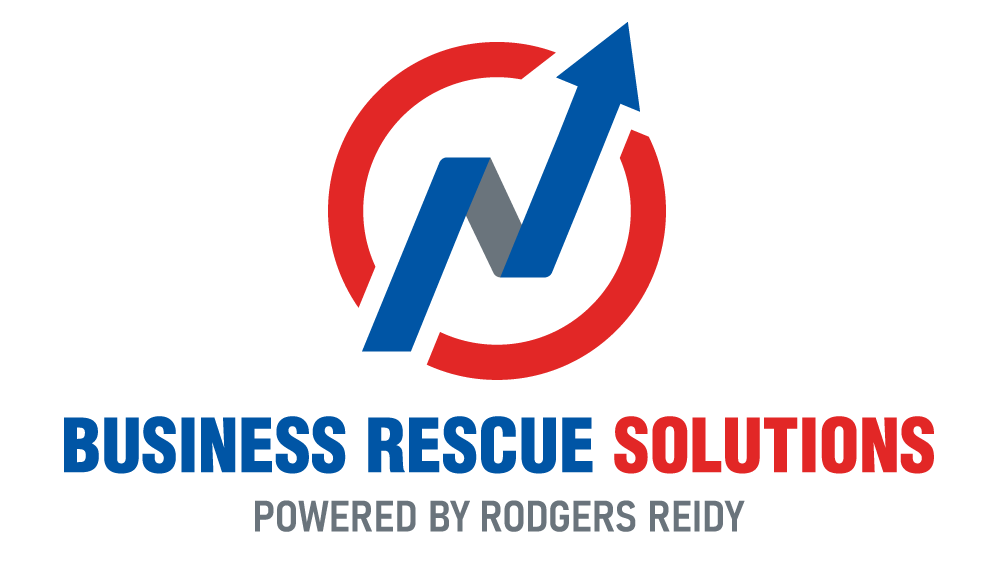
Voluntary Administration and your business
If your company is in financial distress and can’t meet its financial obligations, it may need to enter into ‘voluntary administration’. Voluntary administration is a process whereby an external administrator is appointed to assess your company’s business and financial affairs, understand how it came to be in trouble, and report to creditors on what options are available to resolve those problems.
In this article, we’ll look more at what voluntary administration involves, how the process is generally managed, and what the outcomes might be for businesses.

What is voluntary administration?
When a company becomes insolvent (it can’t meet its financial obligations), it needs to take serious measures to ensure it is operating within the law, and to quickly sort out whether or not it is possible to continue trading.
The directors of an insolvent company must appoint an external administrator to assist the business through the voluntary administration process. (A voluntary administrator may also be appointed by a liquidator, provisional liquidator, or secured creditor with a charge over most of the company’s assets.)
The voluntary administrator assesses the company’s financial condition and reports their findings to the company’s creditors. They also make recommendations as to whether or not the company should:
- Be returned to the control of the company directors (the voluntary administration ends).
- Enter into a Deed Of Company Arrangement (DOCA) if one has been proposed, whereby the company pays all or part of its debts, and is then considered free of those debts.
- Enter into liquidation (a liquidator is appointed and the company is wound up).

During the voluntary administration, the powers of the company’s directors and officers are suspended. The voluntary administrator can, if needed:
- Reduce staff
- Sell the business in its entirety, or sell unprofitable parts of the business
- Sell individual assets in the lead up to creditors deciding on the company’s future
- Carry on or close the business
- Perform any function, and exercise any power, that the company or any of its officers could perform or exercise if the company were not under administration.
A voluntary administrator is required to act impartially throughout the voluntary administration process, and must seek to deliver a better return for stakeholders than would result from an immediate winding up of the company. They are also required to report any offences committed by people involved in the company (if applicable).

Alternatives to voluntary administration
It’s possible that your business may be able to explore avenues other than voluntary administration. These include:
- Informal Restructuring, where your business negotiates directly with creditors to reach an agreement outside of formal insolvency processes.
- Safe Harbour Provisions, where your company’s directors seek protection from insolvent trading liability while they work on a turnaround plan for the company.
- Small Business Restructuring (SBR) – available to small businesses with liabilities under $1 million), where debts are restructured.
It can be complicated working out which solution is best for you, and that’s where Business Rescue Solutions can assist in recommending the most suitable plan of action for your business.
What is the overall process for Voluntary Administration?
When the directors of a company conclude that the company is either insolvent, or likely to become insolvent in the near future, it’s time to seek assistance from an external administrator to assess the state of the business and its financial circumstances.
The Voluntary Administration process, when working with Business Rescue Solutions, is as follows:

The appointment of an administrator
After the company directors have resolved that the business is either insolvent or likely to become so, they appoint a Voluntary Administrator (VA). The VA will be able to make an assessment of the business, and handle subsequent processes if liquidation is required.

Voluntary Administrator conducts operational review
If the business is still operating, the Administrator will assess the viability of the business and conclude what options are available for the business. These include, but are not limited to:
– continuing to trade with the option of restructuring, or
– selling the business.

Creditors’ first meeting
Within 8 business days of appointing the Administrator, a meeting is convened with creditors. The aim of the meeting is to consider whether or not to replace the appointed Administrator, and whether or not a Committee of Creditors is required (and if so who its members will be).

Voluntary Administrator begins investigation
The Administrator investigates the company’s financial affairs, and then reports their findings to the creditors. They make recommendations on what options are available to the creditors, in advance of the second creditor’s meeting, which is convened within 20 days after administration commences (unless extended).

Creditors’ second meeting
At the second meeting with creditors, a vote is taken to decide on whether the company should revert to the directors, enter a Deed of Company Arrangement (if proposed), or be wound up (go into liquidation).
The process aims to maximise the chances of the business continuing, or if that’s not viable, to achieve a better return for the creditors than would result from an immediate winding up.

Deed of Company Arrangement Proposal
If a Deed of Company Arrangement is proposed, then a draft Deed will be provided to creditors, outlining the assets/property available for settling all debts/claims against the Company.

Company signs the Deed of Company Arrangement
If creditors voted to accept the proposed Deed of Company Arrangement, the company must sign the Deed of Company Arrangement within 15 business days of the creditors’ meeting, unless the court allows a longer time. If this doesn’t happen, the company automatically enters liquidation, with the Voluntary Administrator taking on the role of liquidator.

What is a Deed of Company Arrangement?
The Deed of Company Arrangement (DOCA) is a binding agreement between a company and its creditors, and outlines how the company’s property and affairs will be dealt with. The DOCA aims firstly to maximise the chances of the company, (or as much of its business as possible) continuing, and/or to provide the best return possible for its creditors (better than they would likely receive if the company were wound up).
The DOCA can be proposed by a company director, shareholder or any third party, and is administered by a deed administrator, (this can be the registered liquidator, acting in the role of voluntary administrator).

What is insolvency?
When a business is insolvent, it means either that it can’t pay its debts when due, or that the total debt is greater than the value of all their assets. It is a situation that requires serious attention, and in Australia, legislation under the Corporations Act (CORPORATIONS ACT 2001 – SECT 588G) imposes a duty on directors to prevent trading whilst a company is insolvent.
What causes insolvency?
A range of factors may lead to a company becoming insolvent, including economic slowdowns, weak trading conditions, strict tax debt enforcement by the ATO, and poor financial management on the part of the company. Often a combination of factors is at play, and all these factors are considered when determining the reasons why a company needs to enter into voluntary administration.

Are there ways to avoid insolvency?
Whilst it’s difficult to avoid economic slowdowns, there are some measures a company can take to prevent insolvency. These are as follows:
Avoid Excessive Debt: At certain times when funds are tight, borrowing money might be appealing, however relying heavily on external funding can cause long-term issues, especially given the current high-interest rates.
Manage Cash Flow: It’s wise to plan major expenses in advance to ensure you can effectively handle your cash inflows and outflows.
Cut Costs: Adopt strategies to reduce costs, such as cutting unnecessary spending and utilising discounts and promotions.
Monitor Tax Obligations: Set aside funds for tax liabilities in advance.
Seek Professional Advice: Regularly consulting with your business accountant, advisor and lawyer about how to meet all legal and financial obligations is recommended. This is especially important if your business is looking like it will soon become insolvent.
Diversify, if possible: Relying on offering one particular service or product, or catering to one particular customer base can be risky, especially in challenging economic times. Whilst it’s not always possible to diversify your business, if you can, it may make it possible to stay afloat when certain income streams dry up.

What should I do if my company is facing insolvency?
If your business is insolvent, or looks to soon become insolvent, you must seek help quickly.
Steps your business can take when facing insolvency are:
- Get an accurate idea of your debt, so that you know how long it will take to pay off, and what options you may have available to pay that debt.
- Gather all your financial documentation to present to an administrator.
- Get assistance from an accountant or lawyer to see if it is possible to continue trading.
- Get financial advice on ways to reduce costs, reduce debt, and how to deal with the ATO.
- Contact creditors to discuss ways to repay your debt in instalments, if possible.
A solution that encompasses all of the above is working with Business Rescue Solutions. We have administrators on staff who can assess your business and financial position, advise you on the best path forward, and take on the task of administering voluntary administration if required.

In summary…
Though a challenging process, voluntary administration may be essential for businesses facing insolvency. An external administrator will help to assess the financial situation and explore solutions like restructuring, liquidation, or a Deed of Company Arrangement. The overall aim is to seek a better outcome for the business and creditors.
If facing insolvency, it’s important to seek professional advice early. Working with experienced and registered professionals, like those at Business Rescue Solutions, can guide companies through the process, ensuring legal compliance and optimal results.
Frequently Asked Questions
It’s quite possible that a business won’t know whether or not voluntary administration is the only option available to them, or if there are other ways to rescue their business. That’s why reaching out to a professional service like Business Rescue Solutions is worthwhile, as we can appraise your business and understand what options are suitable, then assist you down the path to either a small business restructure, or through voluntary administration.
We have a 30 second test that quickly identifies what pathway you can take for your business.
No. Bankruptcy relates to an individual being unable to pay their debts, rather than a company being unable to pay debts.
No. Liquidation is where a company is wound up and closed. This usually occurs after all avenues have been sought to save the insolvent business (including, but not limited to, going through the voluntary administration process), and these measures have not been successful.
With voluntary administration, there still may be a chance to save an insolvent business. The administrator appointed to investigate the business’s financial situation and challenges will conclude whether or not there is potential for the business to continue operating. Basically, it is one of the resorts before liquidation.
Subject to a voluntary administrator’s assessment, if the business is viable to continue trading, the administrator may choose to do so. However, if it is determined that continuing to trade is not commercially viable, the administrator has the power to terminate or dispose of all or part of the business.
The company needs to sign the Deed of Company Arrangement within 15 business days of the creditors’ meeting, unless the court has allowed more time.
If the 15 business day time period has expired (and the court hasn’t allowed more time), then the company will automatically go into liquidation. The voluntary administrator becomes the liquidator.
All unsecured creditors, even if they did not vote or voted against of the Deed of Company Arrangement
The owners of property who lease property to the company, together with secured creditors, if they voted in favour of the Deed of Company Arrangement. In certain circumstances, the Court can also order these people to be bound by the deed, even if they didn’t vote for it.
A creditor is anyone owed money by the company in question. They may have made loans to the company, supplied goods or services, paid for goods or services they haven’t yet received, or are employees owed money for unpaid wages and other entitlements.
Creditors might be ‘secured’, ‘unsecured’, or ‘contingent’ creditors (those owed money by the company if a certain event occurs).
Secured creditors hold a security interest in some of all of the company’s assets, to secure a debt owed by the company.
An unsecured creditor doesn’t hold a security interest in any of the company’s assets, but may still be owed money by the company.
Employees are considered as ‘priority unsecured creditors’, as outstanding entitlements are usually paid before the claims of other ordinary unsecured creditors.



